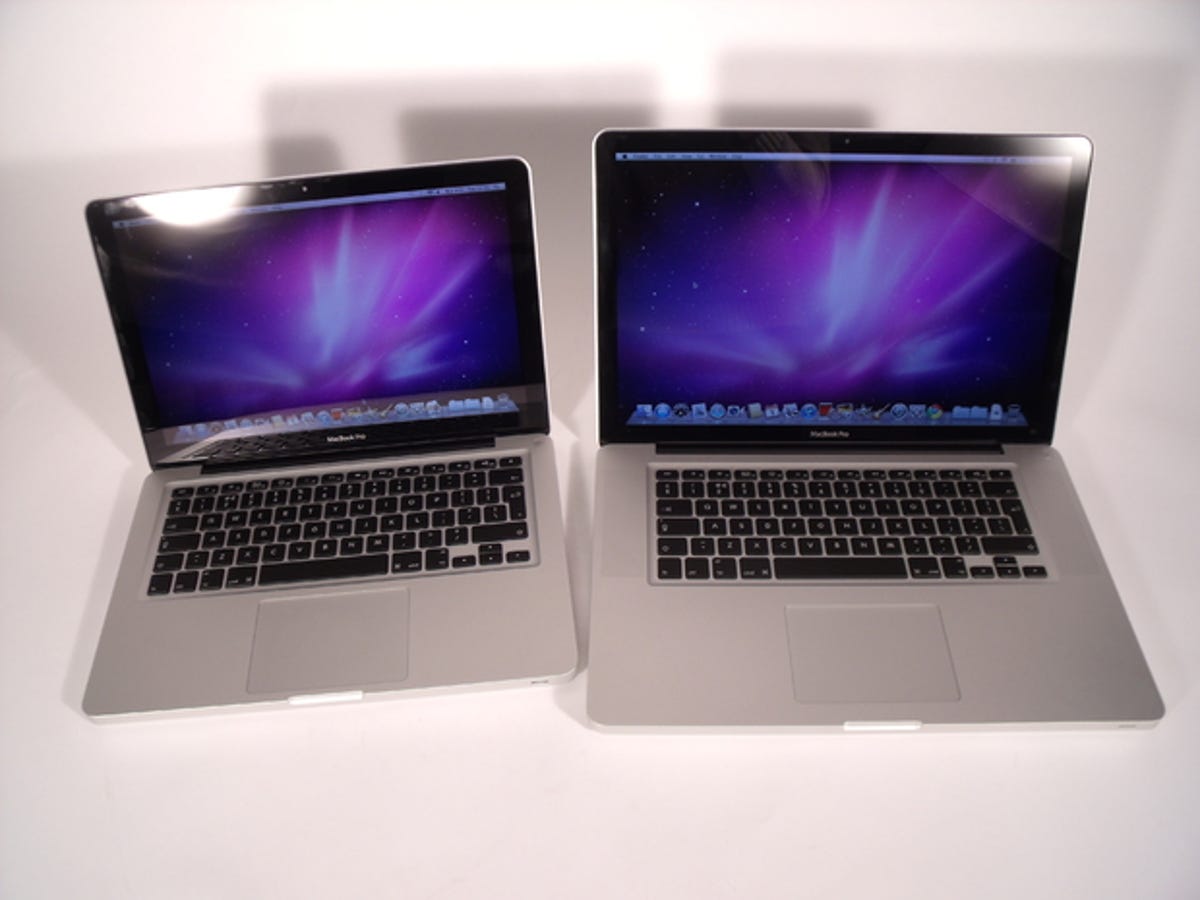
Every year, Apple takes a long, hard look at its popular MacBook Pro line of laptops and decides to have a tinker. This time, practically no changes have been made to the Pro's external appearance, but Apple's made some rather radical tweaks under the hood. Click through our photo gallery above to check out the 13- and 15-inch versions in all their glory.
Aluminium minion
The minimalist chic of previous Pros has been retained. The aluminium design still looks classy in our opinion, even if we'd have liked to have seen some changes just for the sake of progress. The aluminium body is still quite hefty, weighing around 2kg in the case of the 13-inch model and 2.5kg in the case of the 15-inch version. Nevertheless, it feels really sturdy and its build quality is excellent.
The 13-inch model measures 325 by 24 by 227mm, while the 15-inch machine will take up 364 by 24 by 249mm in your satchel. Note that the 13- and 15-inch versions are equally thick. The 17-inch model is only slightly porkier, at 25mm thick.
The webcam above the display now has a 720p resolution, so you can make FaceTime calls in high definition. "Magnifique," as they say in France.
One port to rule them all
The new Pros offer a brand new port on the left-hand side -- Thunderbolt. It's essentially a PCI Express port and DisplayPort rolled into one. That means it offers fast data-transfer speeds of up to 10Gbps, and will also export your MacBook's desktop, so you can plug the computer into a bigger display. You can link up to six Thunderbolt devices together.
In our review of the 13-inch Pro, we noted that, while Thunderbolt's bound to win over video professionals who have huge amounts of data to funnel around at speed, it doesn't have too much appeal for the average consumer. Thunderbolt cabling is going to be expensive too -- a cable isn't included with these MacBooks. We'll also have to wait until the summer before we see Thunderbolt peripherals popping up.
More bothersome is that none of the new MacBooks offer a USB 3.0 port. USB 3.0 offers significantly speedier transfer times than USB 2.0, and such ports are now popping up on loads of new laptops. We're guessing Apple's counting on Thunderbolt's eventual success, but, in the short term at least, a USB 3.0 port would have been helpful.
Core blimey
The new MacBooks offer speedier performance, thanks to a wheelbarrow-full of new components. Each one is kitted out with Intel's new Sandy Bridge Core i-series chips. The 13-inch model comes with either a dual-core Core i5 chip for £1,000, or a dual-core Core i7 chip for £1,300.
The 15-inch model offers a choice of two quad-core Core i7 processors, and also packs a dedicated AMD Radeon HD graphics card. There are two GPU choices available, depending on how much you're willing to shell out.
The lack of a dedicated GPU in the 13-inch model means it won't be a great machine for anyone who's into gaming or other graphically intensive tasks, like video editing or crafting 3D objects in specialist software. If you want a laptop for such tasks, go with the 15-inch version.
Apple reckons you'll get 7 hours of battery life out of these machines with relatively casual use. Based on our tests, we're inclined to agree. Such impressive battery life is a big plus point of these machines.
Are you impressed with the changes that Apple has made? Or are these relatively modest improvements not enough for you? Let us know in the comments section below, or on our Facebook page.

